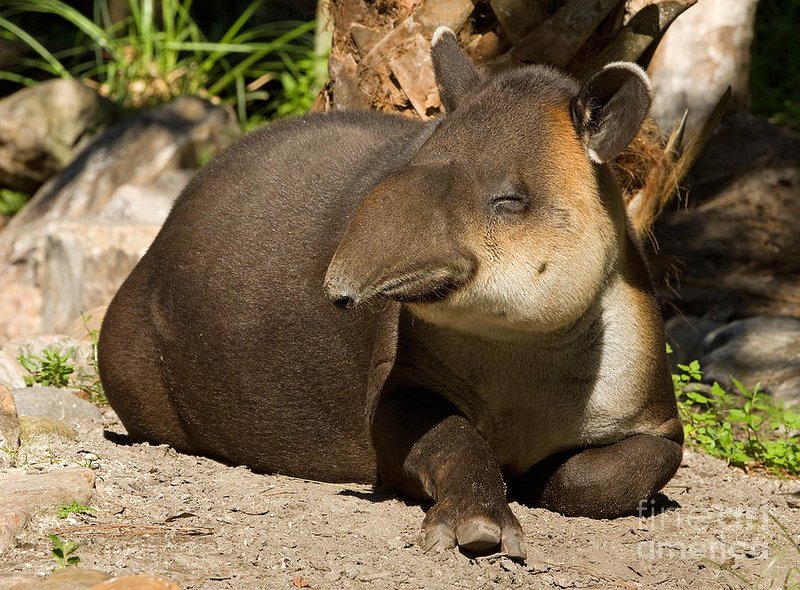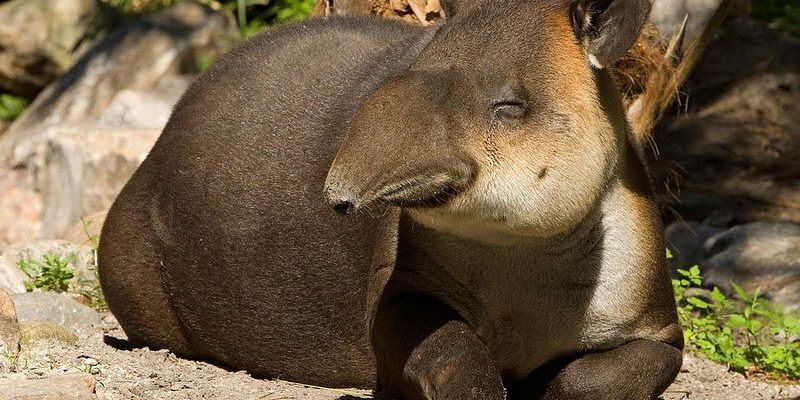
When it comes to parenting, Baird’s tapirs are surprisingly attentive. The mothers, called sows, have a unique way of caring for their young, known as calves. Just like how we might worry about our kids crossing the street, they protect their little ones from predators and guide them in their new environment. The bond between a mother and her calf is strong, and their nurturing behavior is integral for the calf’s survival. By creating a safe haven in the wild, they ensure that the next generation thrives. But what does this process look like? Let’s break it down step by step.
The Gestation Period: A Long Wait
The first stage of raising a calf begins with a lengthy gestation period, lasting about 13 months. This is the time when the mother tapir prepares for the arrival of her little one. Think of it like waiting for a new movie release; the anticipation builds as the days go by. During this time, the mother focuses on foraging for food, ensuring she gets the nutrients she needs. Tapirs mainly eat foliage, fruits, and aquatic plants, which help provide a balanced diet for both her and her developing calf.
Once the time comes for the mother to give birth, she typically seeks a secluded area away from the prying eyes of predators like jaguars or crocodiles. This not only gives the calf a safe space to enter the world but also allows the mother to bond with her new arrival. After the birth, the calf will weigh around 24 pounds and have a striking coat of brown and white stripes, which helps it camouflage in the wild. This natural pattern is a clever trick, making it less visible to predators.
Mother-Child Bonding: The First Weeks
After the birth, the bonding process begins. The mother immediately licks the calf clean, which not only helps stimulate the calf but also strengthens their connection. This initial grooming is crucial; it’s the first step toward establishing trust and familiarity. Just like how a parent might hold their newborn close, the sow keeps her calf nearby and encourages it to stay close.
During the first few weeks, a calf will nurse frequently. Baird’s tapir calves typically rely on their mother’s milk for about six months. This period is vital for their growth and development. It’s also during this time that the mother begins to introduce her calf to solid foods. You might think of it as teaching a toddler to eat; she shows her calf the best plants and fruits to munch on, guiding it toward a diet similar to her own.
Learning the Ropes: Independence Builds
As the calf grows, it becomes increasingly independent. Around six months, it starts to venture out on its own, though it still stays close to its mother. This is like sending your kid to a summer camp—excitement mixed with a bit of worry. The mother’s role shifts slightly from a protector and nurturer to a teacher. She shows her calf how to forage for food and navigate the complex world of the rainforest.
It’s also essential for the calf to learn how to avoid dangers. The mother uses her keen sense of smell and hearing to detect threats, teaching her young to be vigilant. For instance, if they come across a potential predator, she will guide her calf to a safe hiding spot. This kind of hands-on experience is key to survival in the wild.
Playtime Matters
One of the charming aspects of tapir calves is their playful nature. They often engage in mock-chasing games and exploring their surroundings, which are essential for their development. Playing helps improve their physical coordination and social skills. These moments of fun are not merely for entertainment; they serve as vital lessons for life in the wild.
Defending the Young: The Mother’s Role in Safety
Predators pose a significant challenge to young tapirs. Mothers take on the crucial role of protecting their calves from threats like big cats and birds of prey. When danger approaches, a mother tapir will often lead her calf to safety, using her size and strength to fend off potential attackers. Imagine a mama bear fiercely guarding her cubs—Baird’s tapirs exhibit similar protective instincts.
Interestingly, adult tapirs are known to be generally solitary creatures, but when it comes to raising young, they become more social. The mother may even seek out the help of other female tapirs during this vulnerable time, creating a supportive community that benefits all.
The Weaning Process: Transition to Independence
As a calf approaches its first birthday, the weaning process begins. Typically, this occurs around six to twelve months after birth. By this time, the calf has grown considerably and already learned essential foraging skills. It’s like transitioning from high school to college—ready to take on more responsibility but still needing guidance.
Weaning is a gradual process. The mother starts reducing the frequency of nursing sessions while still encouraging her calf to explore solid food. During this transition, the calf continues to rely on its mother’s knowledge about what to eat and where to find it. It’s the perfect blend of independence and maternal support, preparing the young tapir for life on its own.
Challenges of Raising Calves in the Wild
Life for a Baird’s tapir isn’t always easy. The loss of habitat due to human activities and poaching poses significant challenges for these animals. Mothers must navigate not only natural predators but also environmental threats. Stressed environments can lead to reduced food availability, making it harder for mothers to care for their young.
Additionally, climate changes can affect the delicate balance of the ecosystem. For instance, if flooding occurs during the rainy season, it can disrupt feeding patterns and safety. These challenges make the job of a mother tapir even more critical. They need to be resourceful and adaptive to ensure their calves grow up strong and healthy.
Raising young in the wild is no small feat for Baird’s tapirs. From the lengthy gestation and delicate bonding moments to teaching independence and navigating dangers, each step of the way is filled with challenges and triumphs. This unique approach to parenting not only ensures the survival of the species but also highlights the importance of nurturing within the animal kingdom.
As we wrap up, it’s clear that Baird’s tapirs are more than just intriguing creatures; they are a testament to the dedication and resilience of wildlife parenting. With so much to learn from these gentle giants, we can appreciate the complexities of their lives and the vital role they play in their ecosystems. Next time you hear about tapirs, you’ll know just how much love and effort goes into raising their young in the wild.

